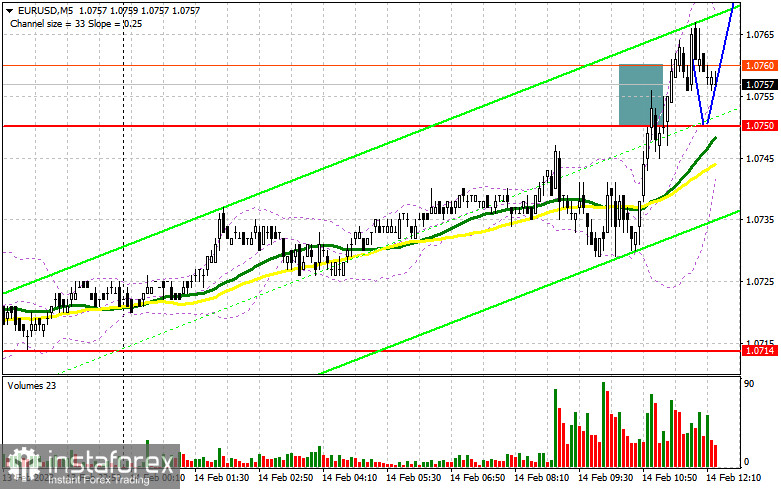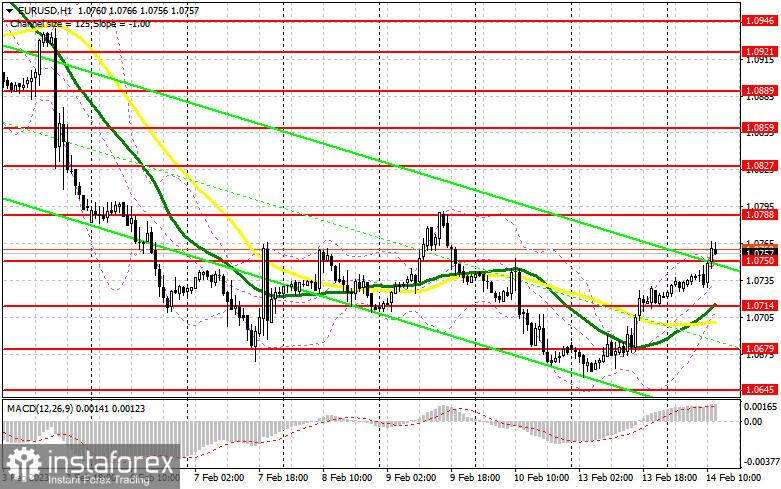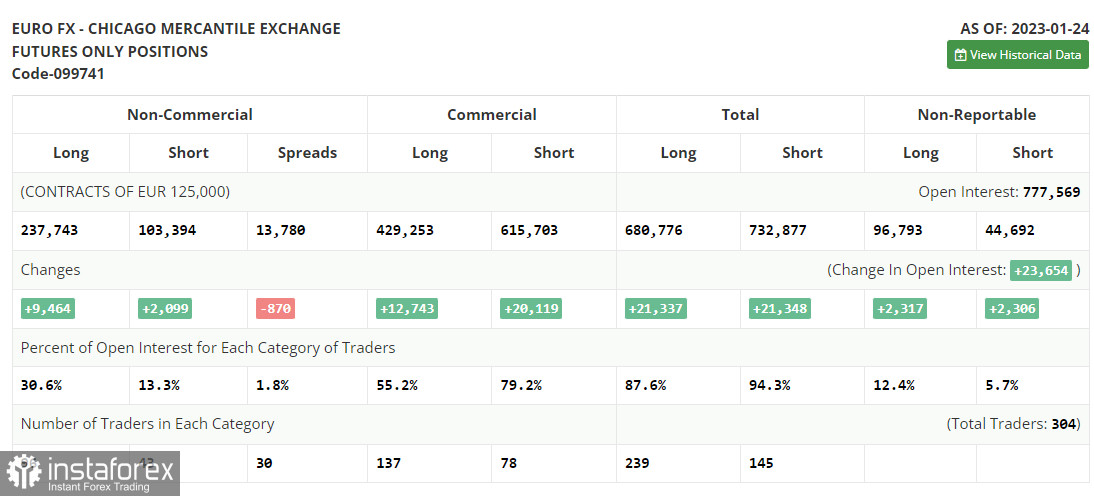When to open long positions on EUR/USD:
In my morning article, I turned your attention to 1.0750 and recommended making decisions with this level in focus. Now, let's look at the 5-minute chart and figure out what actually happened. An increase in the pair in the morning led to a false breakout of 1.0750. However, it failed to resume a downward movement. Hence, I had to close Stop Loss orders. However, the technical outlook for the afternoon remained the same.

Traders will hardly make a profit at 1.0750. The trajectory of the pair will mainly depend on the market reaction to the US inflation data. If it exceeds forecasts, the euro is likely to drop to the support level of 1.0714. At this level, the moving averages are benefiting the bulls. They need to defend this level. If they fail, the bears are sure to exert pressure on the pair. Only after a false breakout of 1.0714, I would advise you to go long. The pair may touch 1.0750 where trading is carried out at the moment. A breakout and a downward test of this level on the second attempt will give an entry point into long positions with an increase to 1.0788. A breakout of this level may happen only if the US CPI declines sharply. It will force the bears to close their Stop Loss orders. It will create a buy signal with the likelihood of a rise to 1.0827 where I recommend locking in profits. If EUR/USD dips and buyers show no energy at 1.0714 in the afternoon, the pressure on the pair will increase. The bulls will completely lose control of the market. In this case, one should pay attention to the support level of 1.0679. Only a false breakout there will give new entry points into long positions. You could buy EUR/USD at a bounce from a low of 1.0645 or 1.0601, keeping in mind an upward intraday correction of 30-35 pips.
When to open short positions on EUR/USD:
The bears need to regain control of 1.0750. They failed to defend this level in the morning. However, as I have mentioned above, everything will depend on US inflation data. Speculators are cautious as nobody is willing to take risks. If inflation drops and the euro climbs drastically, it is better to open short positions after a false breakout of the resistance level of 1.0788 with a return to 1.0750. A breakout and an upward retest of this level could generate a sell signal with a decrease to 1.0714. Bulls and bears could tussle for this level. A fall below this level in the afternoon may trigger a significant downward movement to 1.0679. I recommend locking in profits there. If EUR/USD rises during the US session and bears show no energy at 1.0788, it will undermine a bear market. The bulls will try to dominate the market again. In this case, I would advise you to postpone short positions until a false breakout of 1.0827. You could sell EUR/USD at a bounce from a high of 1.0859, keeping in mind a downward intraday correction of 30-35 pips.

COT report
Due to a technical failure of the CFTC that has been going on for more than two weeks, new COT reports continue to be delayed. The most recent data was published on January 24.
The COT report for January 24 logged a rise in both short and long positions. Traders have significantly increased long positions following hawkish speeches of ECB policymakers. They are betting on further monetary tightening by the ECB and the Fed's dovish stance. The US regulator may reduce the pace of tightening for the second time in a row. Weak macro stats on the US economy, namely a drop in retail sales and a slowdown in inflation may force the central bank to take a pause in rate hikes to avoid any damage. This week, several central banks will hold their meetings. Their results will eventually determine the trajectory of the euro/dollar pair. According to the COT report, the long positions of the non-commercial group of traders increased by 9,464 to 237,743 while short positions advanced by 2,099 to 103,394. At the end of the week, the total non-commercial net position rose to 134,349 from 126,984. It appears investors believe in the upside potential of the euro. Nevertheless, they are waiting for more clues from central banks regarding interest rates. The weekly closing price grew to 1.0919 from 1.0833.

Indicators' signals:
Trading is carried out above the 30 and 50 daily moving averages, which indicates the likelihood of a further upward movement.
Moving averages
Note: The period and prices of moving averages are considered by the author on the H1 (1-hour) chart and differ from the general definition of the classic daily moving averages on the daily D1 chart.
Bollinger Bands
If EUR/USD declines, the indicator's lower border at 1.0714 will serve as support.
Description of indicators
- Moving average (moving average, determines the current trend by smoothing out volatility and noise). Period 50. It is marked yellow on the chart.
- Moving average (moving average, determines the current trend by smoothing out volatility and noise). Period 30. It is marked green on the chart.
- MACD indicator (Moving Average Convergence/Divergence - convergence/divergence of moving averages) Quick EMA period 12. Slow EMA period to 26. SMA period 9
- Bollinger Bands (Bollinger Bands). Period 20
- Non-commercial speculative traders, such as individual traders, hedge funds, and large institutions that use the futures market for speculative purposes and meet certain requirements.
- Long non-commercial positions represent the total long open position of non-commercial traders.
- Short non-commercial positions represent the total short open position of non-commercial traders.
- Total non-commercial net position is the difference between the short and long positions of non-commercial traders.





















